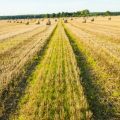Introduction to the Countryside Code
Across the undulating hills and emerald patchwork fields of the British countryside, a timeless invitation beckons. From the wild, windswept moors of Yorkshire to the gentle dales of the Cotswolds, the landscape is alive with quiet wonder—hedgerows tangled with blackberries, skylarks trilling overhead, sheep grazing in ancient meadows. Yet, beneath this tranquil beauty lies a delicate balance between nature, agriculture, and those who venture out to explore it. This is where the Countryside Code comes into its own: a guiding set of principles for anyone seeking to wander these cherished green spaces. More than mere rules, the Code embodies a spirit of respect—for the land itself, for those who live and work upon it, and for fellow walkers sharing in its splendour. Mastering the Countryside Code is not only about safety or etiquette; it’s about treading lightly on storied paths, ensuring that our footsteps today preserve the wild heart of Britain for generations yet to come.
2. Understanding Your Rights and Responsibilities
To walk the hills of Britain is to step into a living tapestry, where every stile, gate, and stone wall whispers of centuries past. Before you lace up your boots, it’s essential to weave yourself gently into this landscape by understanding your rights and responsibilities—a harmonious balance at the heart of the Countryside Code.
The Privilege of Access
In the UK, hillwalkers are granted remarkable freedoms through public footpaths, bridleways, and open access land. These routes are your invitation to explore rolling moors, ancient woodlands, and wild uplands. Yet with each right comes a responsibility: to tread lightly, respect private land, and preserve tranquillity for wildlife and fellow walkers alike.
Do’s and Don’ts: Navigating Public Footpaths
| Do | Don’t |
|---|---|
| Follow marked footpaths and respect signs | Stray from designated routes or cut across crops |
| Close gates behind you as found | Leave gates open or tamper with fences |
| Yield space to livestock and give them a wide berth | Disturb animals or damage dry stone walls |
Respecting Land Boundaries
The patchwork fields, often bordered by hedgerows and age-old drystone walls, are more than just scenery—they are livelihoods. When your path threads through working farms or grazes the edge of private gardens, remember you are a guest. If you meet a landowner or farmer, a friendly nod or “Good morning!” goes a long way in upholding the mutual respect that sustains countryside harmony.
A Story from the Trail
Imagine cresting a misty ridge at dawn, only to find sheep grazing quietly on dew-soaked grass. You skirt the flock carefully, closing the gate with a gentle click behind you—a simple act that honours both tradition and trust. Every mindful step ensures these landscapes remain open for all who follow in your footsteps.

3. Respectful Encounters with Wildlife and Livestock
There is a quiet thrill in rounding a corner to find a startled deer vanishing between silver birches, or pausing to watch skylarks wheel above the heather-clad hills. The British countryside hums with life, and as hillwalkers, we are guests in this living tapestry. The Countryside Code asks us to observe, not intrude; to leave no trace but our own fleeting footprints on muddy tracks.
Observing Local Wildlife: A Gentle Approach
With every step, the landscape reveals subtle wonders – a flash of a kingfisher by a winding brook, or the steady gaze of a fox beneath ancient oaks. To truly honour these encounters, keep your distance and use binoculars for a closer look. Speak softly; loud noises can scatter birds and unsettle mammals. Remember, spring and early summer are nesting seasons for many ground-nesting birds – stick to marked paths and avoid lingering near thickets or tall grass where fledglings may hide.
Respecting Farm Animals: Sharing the Land
Across the rolling dales and patchwork fields, livestock graze peacefully – sheep cropping tufts of grass, cattle ambling by stone walls. When passing through farmland, follow the Country Code’s advice: always close gates behind you, never feed or attempt to pet animals, and move calmly without startling them. If walking with dogs, keep them on leads around livestock and under close control at all times. Farmers rely on these routines to protect their flocks and herds, and your consideration helps maintain trust between walkers and landowners.
Finding Balance: Discovery with Care
The magic of hillwalking lies in those unexpected glimpses of wildness – but this comes with responsibility. Resist the urge to collect feathers, flowers or stones; instead, let your memories be your keepsakes. Take only photographs and leave only footprints, so that future generations might also know the quiet joy of sharing space with Britain’s rural inhabitants. By balancing curiosity with sensitivity, we ensure that both wildlife and livelihoods continue to flourish alongside our adventures.
4. Leave No Trace: Caring for the Landscape
There is a gentle magic in wandering through the wild moors and ancient woodlands of the UK, where every step connects you to centuries of natural wonder. But with that joy comes a responsibility – one that asks us not only to enjoy but also to protect. The Countryside Code reminds us that our presence should be as light as a whisper on the wind, leaving behind no scars or shadows.
A Heartfelt Commitment to Preservation
To leave no trace is more than tidying up after ourselves; it is an act of care for both the land and its story. Each crisp packet or stray bottle left behind is a blemish upon an otherwise unspoilt canvas, while trampling off-path or disturbing old stone walls can erase echoes of history. Whether you are treading through Peak District heather or pausing beside a Cotswold dry-stone wall, small choices build into a legacy of respect.
Waste Disposal: Take Only Memories, Leave Only Footprints
Carrying your litter home is a simple yet profound gesture. Bins are rare in remote areas, so come prepared with bags to collect all waste – including biodegradable items like apple cores, which can harm native wildlife. Dog owners should also bag and remove pet waste, as even this can disrupt delicate ecosystems.
Waste Disposal Guide
| Item | Action | Why It Matters |
|---|---|---|
| Litter (wrappers, bottles) | Take home | Prevents pollution and protects wildlife |
| Biodegradable food waste | Take home | Keeps non-native species from spreading |
| Dog waste | Bag and remove | Avoids contamination of water and soil |
| Toilet paper/tissues | Packed out or disposed in public loos | Keeps paths pleasant for others |
Minimising Your Impact on Nature and Heritage
The countryside’s beauty lies not just in its views, but in its living tapestry of plants, animals, and historic features. Stay on marked paths whenever possible to preserve fragile ground-nesting bird habitats and prevent erosion. Resist the urge to pick wildflowers or disturb old ruins – what may seem a harmless souvenir can lead to lasting loss.
Respecting Natural and Historic Features
- Stick to Paths: Protect rare species by avoiding shortcuts.
- Avoid Disturbing Wildlife: Watch quietly from afar; keep dogs under control.
- Leave Stones and Artefacts: Every rock and relic plays its part in the landscape’s story.
- No Fires: Open fires scar landscapes and risk wildfires; use stoves if cooking is necessary.
Together, these mindful acts ensure that future generations will find the same solace and splendour along Britain’s hills as we do today – undiminished by our passage, shaped only by our reverence.
5. Safety and Preparedness in the British Hills
There is something quietly humbling about setting out across Britain’s wild hills, where rolling heather moors and craggy outcrops shift beneath ever-changing skies. To truly master the countryside, however, one must respect its unpredictable moods and come prepared for all eventualities.
Understanding the Weather
The British weather is a character all its own—sometimes capricious, sometimes benign, always influential. A crisp morning can swiftly give way to mist, rain, or even a sudden squall. Before each walk, consult the Met Office forecast and be ready to adapt your plans. Remember that conditions on high ground may differ wildly from the nearest village below.
Packing Proper Gear
Seasoned hillwalkers know that good kit is more than comfort—it’s your safety net. Waterproofs are essential, even on bright mornings, as showers can roll in on a whim. Layering is key: think merino wool or synthetic fabrics to keep you warm and dry. Well-fitted boots with solid grip protect your feet against boggy tracks and rocky scrambles alike. Don’t forget a hat and gloves; the wind on the fells can bite even in June.
Navigating Unpredictability
Maps and compasses are still invaluable, especially when visibility drops or GPS signals falter among remote tors. Brush up on basic navigation skills before venturing far from marked trails. Let someone know your route and expected return time—a simple precaution that can make all the difference if you’re delayed by fog or injury.
A Story from the Fells
Consider Emma’s tale: setting out from Grasmere under clear skies, she soon found herself enveloped in cloud atop Helm Crag. Thanks to her map and compass—and knowing not to trust phone reception—she picked her way safely down through bracken and gorse, grateful for extra layers stashed in her pack as the temperature plummeted unexpectedly.
Hillwalking Tips for Every Rambler
- Check forecasts before you go and monitor changing skies throughout your walk.
- Dress in layers and carry waterproofs year-round.
- Bring food, water, a torch, and a whistle—essentials for any trip off the beaten track.
- Respect signs warning of livestock or shooting in progress; adjust your route accordingly.
By blending preparation with respect for nature’s rhythms, each journey into Britain’s hills becomes not only safer but richer—a story written step by careful step upon ancient land.
6. Connecting with Local Communities
Venturing into the heart of Britain’s rolling hills and wild moors, you’ll find that the countryside is not just a place of scenic beauty but also a tapestry woven with the lives and traditions of local people. As walkers, we are guests in these rural landscapes, passing through villages where time-honoured rhythms shape daily life. Embracing these communities enriches your hillwalking experience and ensures that your presence brings positive impact.
Engage with Village Life
Many British villages offer a warm welcome to respectful visitors. Take the opportunity to pause at a village green or duck into a centuries-old pub for a chat with locals. Listen to their stories; every stone cottage and winding lane holds memories. By simply saying hello or sharing a smile, you become part of the living countryside tapestry, even if just for an afternoon.
Support Rural Businesses
The backbone of countryside vitality lies in its independent businesses – farm shops brimming with local produce, tearooms fragrant with fresh scones, and craft markets filled with handmade treasures. Choosing to spend your money here not only supports livelihoods but also sustains traditional ways of life. When you pick up a jar of local honey or enjoy a hearty ploughman’s lunch, you’re helping keep village economies thriving for generations to come.
Respect Local Rhythms
Countryside communities move at their own gentle pace, often tied to the seasons and agricultural cycles. Be mindful of working farms: gates may be closed for a reason, and livestock might be on the move. Observe any signage about footpaths or temporary diversions during lambing or harvest time. Your consideration helps maintain harmony between walkers and those whose home this is.
In mastering the Countryside Code, remember that your journey is more than a solitary pursuit—it is an invitation to connect, contribute, and tread lightly upon both land and community. With each step, you can help preserve the unique character of Britain’s rural heartlands for all who follow in your footsteps.
7. Embracing the Joys of British Hillwalking
There is a quiet magic in the gentle undulation of the British hills, where skylarks rise above windswept moorland and sunlight flickers through ancient hedgerows. Hillwalking in the UK is more than a pastime; it is an invitation to step into stories shaped by centuries, to breathe deeply of wild air and reconnect with the rhythms of nature. Each footfall along a bracken-lined path or over a stony ridge offers not just exercise, but a chance for reflection and renewal.
Whether you wander beneath brooding Scottish peaks or ramble across the rolling Cotswolds, these landscapes are stitched into the fabric of British identity. They are places where memories are made: a flask of tea shared at a summit, laughter carried on the breeze, boots muddied by adventure. The simple pleasures—birdsong at dawn, the hush after rain, distant church bells echoing across fields—remind us why we cherish these moments outdoors.
Yet, as we revel in these joys, there is an unspoken pact among all who walk here: to tread lightly, to respect both land and life, and to leave no trace but footprints. By honouring the Countryside Code, we safeguard these cherished spaces for generations yet to come. It is our shared responsibility and privilege to ensure that wildflowers still bloom beside footpaths, sheep graze peacefully on hillsides, and woodlands remain alive with rustling leaves and secret creatures.
So, as your day’s walk draws to a close—boots dusty, heart full—take a moment to appreciate the beauty and tranquillity that Britain’s countryside offers. Let gratitude guide your steps homeward, knowing that each mindful choice helps preserve this patchwork of green for all who follow. In embracing both the freedom and responsibility of hillwalking, we become stewards of these beloved landscapes—and part of their enduring story.


